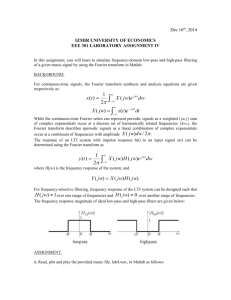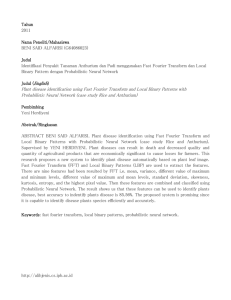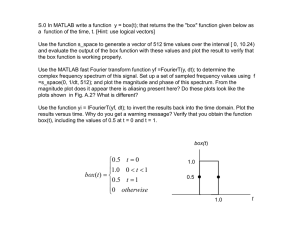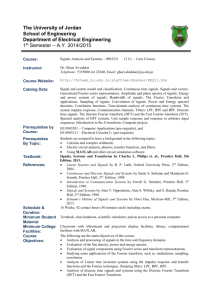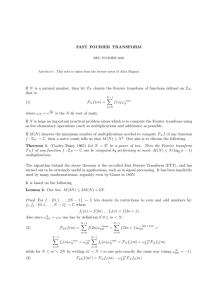Homework 4: Due Oct 14, 2010. Forward and Inverse Discrete
advertisement
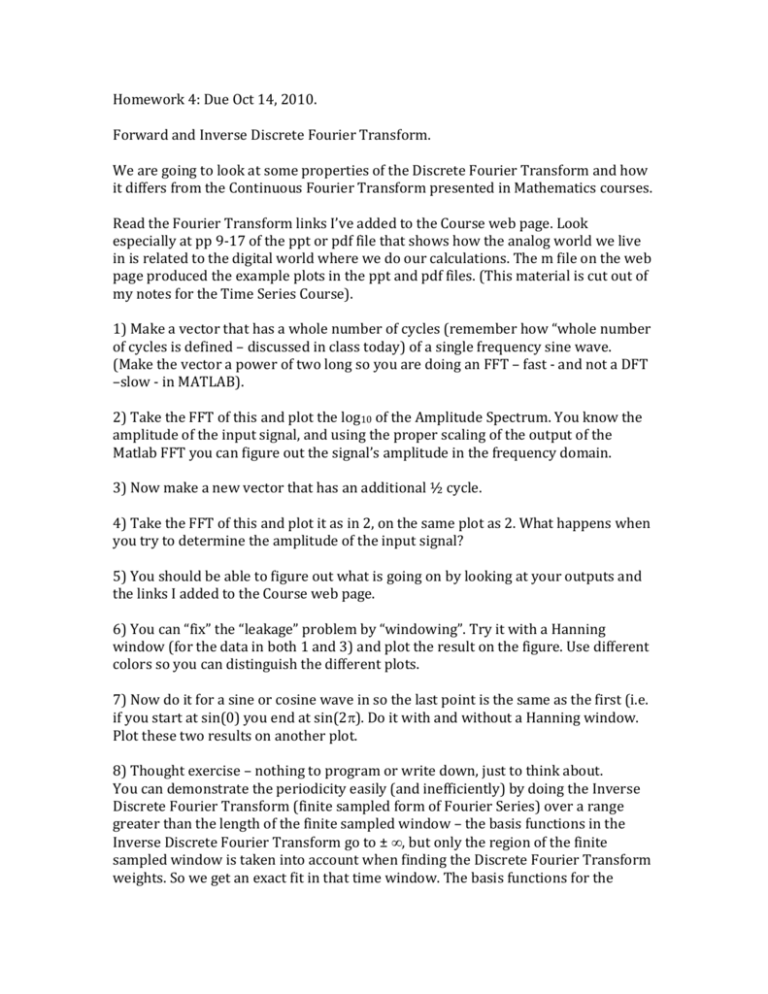
Homework 4: Due Oct 14, 2010. Forward and Inverse Discrete Fourier Transform. We are going to look at some properties of the Discrete Fourier Transform and how it differs from the Continuous Fourier Transform presented in Mathematics courses. Read the Fourier Transform links I’ve added to the Course web page. Look especially at pp 9-17 of the ppt or pdf file that shows how the analog world we live in is related to the digital world where we do our calculations. The m file on the web page produced the example plots in the ppt and pdf files. (This material is cut out of my notes for the Time Series Course). 1) Make a vector that has a whole number of cycles (remember how “whole number of cycles is defined – discussed in class today) of a single frequency sine wave. (Make the vector a power of two long so you are doing an FFT – fast - and not a DFT –slow - in MATLAB). 2) Take the FFT of this and plot the log10 of the Amplitude Spectrum. You know the amplitude of the input signal, and using the proper scaling of the output of the Matlab FFT you can figure out the signal’s amplitude in the frequency domain. 3) Now make a new vector that has an additional ½ cycle. 4) Take the FFT of this and plot it as in 2, on the same plot as 2. What happens when you try to determine the amplitude of the input signal? 5) You should be able to figure out what is going on by looking at your outputs and the links I added to the Course web page. 6) You can “fix” the “leakage” problem by “windowing”. Try it with a Hanning window (for the data in both 1 and 3) and plot the result on the figure. Use different colors so you can distinguish the different plots. 7) Now do it for a sine or cosine wave in so the last point is the same as the first (i.e. if you start at sin(0) you end at sin(2). Do it with and without a Hanning window. Plot these two results on another plot. 8) Thought exercise – nothing to program or write down, just to think about. You can demonstrate the periodicity easily (and inefficiently) by doing the Inverse Discrete Fourier Transform (finite sampled form of Fourier Series) over a range greater than the length of the finite sampled window – the basis functions in the Inverse Discrete Fourier Transform go to ± , but only the region of the finite sampled window is taken into account when finding the Discrete Fourier Transform weights. So we get an exact fit in that time window. The basis functions for the forward and Inverse Discrete Fourier Transforms, however, are periodic and their period is related to the finite sampled window. If we consider the extensions of the basis functions exist outside the window (perfectly reasonable mathematically), they will add up the same way they do in the window and repeat it, they will not produce the infinitely long sine wave we are imagining we cut a piece out of the size of our window. The “leakage” is due to having to fit the discontinuities when we make what is in the finite sampled window periodic by repeating it. When you do Fourier analysis on the computer, the analog signals will have a continuous distribution of frequencies, they will not be on the “FFT frequency lines or bins” and will “leak”. Sometimes you can ignore this and sometimes you can’t.



